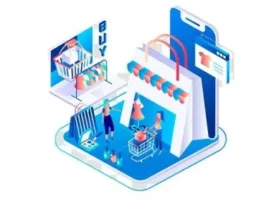What are Loyalty Programs?
Loyalty program, also known as rewards program, increase retention, purchase frequency, lifetime customer value, and referrals. Loyalty programs provide powerful motivation for buyers to create accounts, come back, and spend more. Even better, they build meaningful connections.
How does Loyalty Marketing work?
Loyalty marketing borrows elements from psychology, behavioral economics, and game design. Reward programs transition the focus from percentage off, points earned, and sign-up bonuses to more experiential rewards like interest-aligned gifts, surprise upgrades, or exclusivity-based milestones.
Over time, a business can use the data collected from a loyalty program to figure out ways to make the least profitable customers more profitable, increasing its customer lifetime value (CLV) and thus company revenue and overall projected profitability.
Loyal customers who buy repeatedly are more profitable than ones that buy once. Because repeat customers have a higher lifetime value, the business can predict a high return on investment throughout a customer’s projected buying time with the brand.
For instance, if a company spends $5 to earn a customer and it knows that throughout that customer’s lifetime with the brand, they will likely spend about $100, that’s a great lifetime value to churn (or cost to acquire a customer) ratio (LTV to CAC).
Here are 10 loyalty program strategies to enhance customer retention and increase sales.
-
Points-based loyalty system
This is one of the most popular loyalty program strategies. The points-based reward system is based on a simple principle: the more you spend, the more points you get in return. Customers earn points for every purchase they make, and these points can be redeemed for rewards such as discounts, free products, or exclusive experiences.
-
Tiered loyalty program
This strategy involves creating multiple levels or tiers within the loyalty program. Customers start at a basic level and can progress to higher tiers ie silver, gold, platinum tiers by earning more points or reaching specific milestones. Each tier offers increasingly valuable rewards and benefits, providing an incentive for customers to reach and maintain higher levels. As customers progress through the tiers, they unlock exclusive perks, such as free shipping, personalized services, or priority access to new products.
-
Cash-back or Rebate loyalty program
This type of program offers customers cash back or rebates on their purchases. Customers can earn a percentage of their purchase amount back as a credit towards their next purchase.
-
Membership loyalty program
Subscription or Membership loyalty programs require customers to pay a fee to join and receive exclusive benefits and rewards. This can include things like free shipping, early access to sales, and personalized discounts. The paid membership aspect can create a sense of exclusivity and commitment among customers.
-
Exclusive offers and discounts
Loyalty programs can provide members with exclusive offers and discounts not available to regular customers. This can include early access to sales, special promotions, or personalized discounts based on individual purchase history.
-
Personalization and targeted rewards
Utilizing customer data collected through the loyalty program, businesses can tailor rewards and offers based on individual preferences and purchase behavior. This personalized approach makes customers feel valued and increases the likelihood of them engaging with the program and making repeat purchases.
-
Gamified loyalty program
Adding gamification elements to loyalty programs can make them more engaging and enjoyable for customers. These loyalty programs use game-like elements to keep customers engaged and incentivize them to earn rewards. This can include challenges, milestones, leaderboards, and interactive experiences that make earning rewards a fun and interactive process.
-
Partnerships and collaborations
Collaborating with other businesses or brands to offer joint rewards or benefits can be an effective loyalty program strategy. This expands the range of rewards available to customers and can attract new customers who are interested in the partner brand.
-
Coalition loyalty program
These programs are partnerships between multiple businesses to offer customers a wider range of rewards and benefits. Customers can earn and redeem points across different businesses within the coalition.
-
Social media engagement
Loyalty programs can leverage social media platforms to engage with customers and offer exclusive rewards or contests. This helps create a sense of community among program members and encourages them to share their experiences with others, potentially attracting new customers.
Benefits of Customer Retention Programs
Customer loyalty refers to a customer’s willingness to work with or buy from a brand repeatedly due to positive customer experience, satisfaction, and the value the customer gets from the transaction. Here are 10 benefits of customer loyalty programs.
- A customer loyalty program helps push customer loyalty by providing rewards to customers that frequently patronize the business’ products and services. Customers who enroll in a loyalty program are often offered discounts or points that they can redeem for future purchases. This incentivizes them to continue purchasing from the brand to accrue more rewards.
- Online retailers operating in a niche with price-sensitive customers are ideal candidates for a loyalty program. Price-sensitive customers respond better to rewards than customers in big-ticket or luxury markets where the price is not an important factor.
- Online businesses operating in markets with several competitors are ideal candidates for a loyalty program. These retailers see the greatest benefit from loyalty programs since they are at the greatest risk of losing customers to competitors. A loyalty program may also help a business stand out amongst the competition, giving the company an upper hand and appearing more customer-centric than other brands.
- The biggest advantage of a loyalty program is that it can align a brand’s entire business toward the most profitable segment of the customer base. This means that the company will begin catering more to customers who have high repeat purchases or average order value (AOV) – depending on what type of loyalty program it implements.
- Loyalty programs often offer rewards for referrals, which can encourage existing customers to refer their friends and family to the brand. This can lead to new business and increased sales. Satisfied loyalty program members are more likely to share their positive experiences with friends, family, and colleagues. This word-of-mouth marketing can lead to new customer acquisitions and boost sales. Additionally, some loyalty programs offer referral rewards, motivating existing customers to actively promote the brand to others.
- Loyalty programs often require customers to provide personal information to enroll, which can be used to gather valuable customer data. This data can then be used to better understand customer behavior and preferences, which can help improve marketing efforts and increase sales.
- Loyalty programs can be used as a platform to promote additional products or services to existing customers. By analyzing their purchase history and preferences, businesses can offer personalized recommendations or incentives to encourage upselling or cross-selling. This strategy not only increases sales but also enhances the overall customer experience.
- Loyalty programs provide an opportunity for businesses to engage with their customers on a regular basis. Through personalized communication via email newsletters or app notifications, companies can update members about special promotions, new products, or upcoming events. This continuous interaction keeps customers engaged and informed, increasing the chances of repeat purchases.
- A well-designed loyalty program can create an emotional connection between customers and the brand. By offering personalized rewards or experiences based on customer preferences and behaviors, businesses make their customers feel valued and appreciated. This emotional bond increases customer loyalty and encourages them to continue supporting the brand.
- By offering rewards and benefits to loyal customers, loyalty programs create a sense of exclusivity and importance around being a member. This can encourage customers to continue doing business with the brand to maintain their status.
When designing a customer rewards program, it is important to consider the business’s goals, target audience, and available resources. Understanding your customers’ preferences and needs and tailoring the loyalty program to align with those factors is essential. By choosing the right loyalty program strategy, businesses can increase customer retention, boost sales, and build stronger relationships with their customers. Regularly analyzing the program’s performance and seeking feedback from participants will also help optimize and improve the effectiveness of the digital marketing strategies.

Hunaid Germanwala is a digital marketer and content creator at Health Products For You since 2014. He has an MS from Ulm University in Germany. His mind is always buzzing with creative ideas and is eager to explore new perspectives. His motto in life is “Better to Light the Candle than to Curse the Darkness.”














Leave a Reply